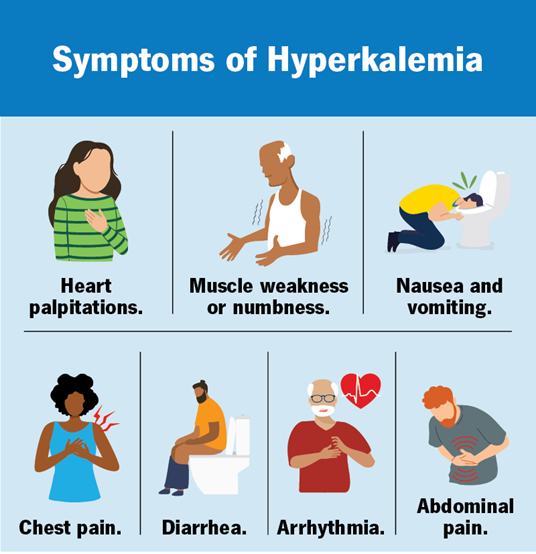Which therapeutic treatment is commonly implemented for children with Hirschsprung disease?
Low protein diet
Surgical removal of the affected section of the bowel
Permanent colostomy
Daily enemas
The Correct Answer is B
Choice A reason:
A low protein diet is not a therapeutic treatment for Hirschsprung disease. Hirschsprung disease is a congenital condition characterized by the absence of ganglion cells in the distal colon, leading to a lack of peristalsis and functional obstruction. Dietary modifications, such as a low protein diet, do not address the underlying issue of the absence of nerve cells in the bowel. Therefore, this choice is incorrect.
Choice B reason:
Surgical removal of the affected section of the bowel is the primary treatment for Hirschsprung disease. This procedure, known as a pull-through surgery, involves removing the aganglionic segment of the colon and connecting the healthy part of the intestine to the anus. This surgery restores normal bowel function by allowing the passage of stool through the healthy, innervated portion of the intestine. The pull-through procedure can be performed using minimally invasive techniques, resulting in shorter recovery times and fewer complications.
Choice C reason:
A permanent colostomy is not typically the first-line treatment for Hirschsprung disease. While a temporary colostomy may be performed in some cases to allow the bowel to heal before a pull-through surgery, a permanent colostomy is usually reserved for more severe cases or when other surgical options are not feasible. The goal of treatment is to restore normal bowel function, and a permanent colostomy is generally considered a last resort.
Choice D reason:
Daily enemas are not a definitive treatment for Hirschsprung disease. While enemas may be used temporarily to relieve symptoms and manage bowel movements, they do not address the underlying cause of the condition. The absence of ganglion cells in the bowel requires surgical intervention to restore normal bowel function. Therefore, daily enemas are not a long-term solution for Hirschsprung disease.
Nursing Test Bank
Naxlex Comprehensive Predictor Exams
Related Questions
Correct Answer is A
Explanation
Choice A reason:
Weight loss despite increased eating is a classic symptom of type 1 diabetes mellitus in children. This occurs because the body is unable to use glucose for energy due to a lack of insulin. As a result, the body starts breaking down fat and muscle for energy, leading to weight loss even though the child may have an increased appetite.
Choice B Reason:
Pale, moist skin is not typically associated with type 1 diabetes mellitus. This symptom is more commonly related to conditions such as anemia or infections. In type 1 diabetes, the skin may actually appear dry due to dehydration caused by high blood sugar levels.
Choice C Reason:
Weight gain and fluid overload are not characteristic of type 1 diabetes mellitus. In fact, children with type 1 diabetes often experience weight loss. Fluid overload is more commonly seen in conditions such as heart failure or kidney disease.
Choice D Reason:
Poor sleep with frequent awakening is not a specific symptom of type 1 diabetes mellitus. While children with diabetes may experience nocturia (frequent urination at night) due to high blood sugar levels, this is not the primary clinical manifestation. The main symptoms are related to hyperglycemia and the body’s inability to use glucose for energy.
Correct Answer is A
Explanation
Choice A reason:
Cardiac arrhythmia is a primary clinical manifestation of hyperkalemia. Hyperkalemia, defined as an elevated level of potassium in the blood, can significantly affect the electrical activity of the heart. This can lead to various types of arrhythmias, including bradycardia, ventricular tachycardia, and even cardiac arrest1. The presence of arrhythmias is a critical indicator of hyperkalemia and requires immediate medical attention to prevent life-threatening complications.

Choice B reason:
Seizures are not typically associated with hyperkalemia2. While severe electrolyte imbalances can potentially lead to neurological symptoms, seizures are more commonly linked to conditions such as hyponatremia (low sodium levels) or hypocalcemia (low calcium levels). Therefore, seizures are not a primary sign of hyperkalemia.
Choice C reason:
Dyspnea, or difficulty breathing, can occur in various medical conditions, including heart failure and respiratory disorders. While hyperkalemia can lead to muscle weakness and fatigue, which might indirectly affect breathing, dyspnea is not a primary clinical manifestation of hyperkalemia. The main concern with hyperkalemia is its effect on cardiac function.
Choice D reason:
Oliguria, or reduced urine output, is a symptom of acute renal failure but not specifically indicative of hyperkalemia. While acute renal failure can lead to hyperkalemia due to the kidneys’ inability to excrete potassium, oliguria itself is not a direct sign of hyperkalemia. The focus should be on the cardiac effects of elevated potassium levels
Whether you are a student looking to ace your exams or a practicing nurse seeking to enhance your expertise , our nursing education contents will empower you with the confidence and competence to make a difference in the lives of patients and become a respected leader in the healthcare field.
Visit Naxlex, invest in your future and unlock endless possibilities with our unparalleled nursing education contents today
Report Wrong Answer on the Current Question
Do you disagree with the answer? If yes, what is your expected answer? Explain.
Kindly be descriptive with the issue you are facing.
